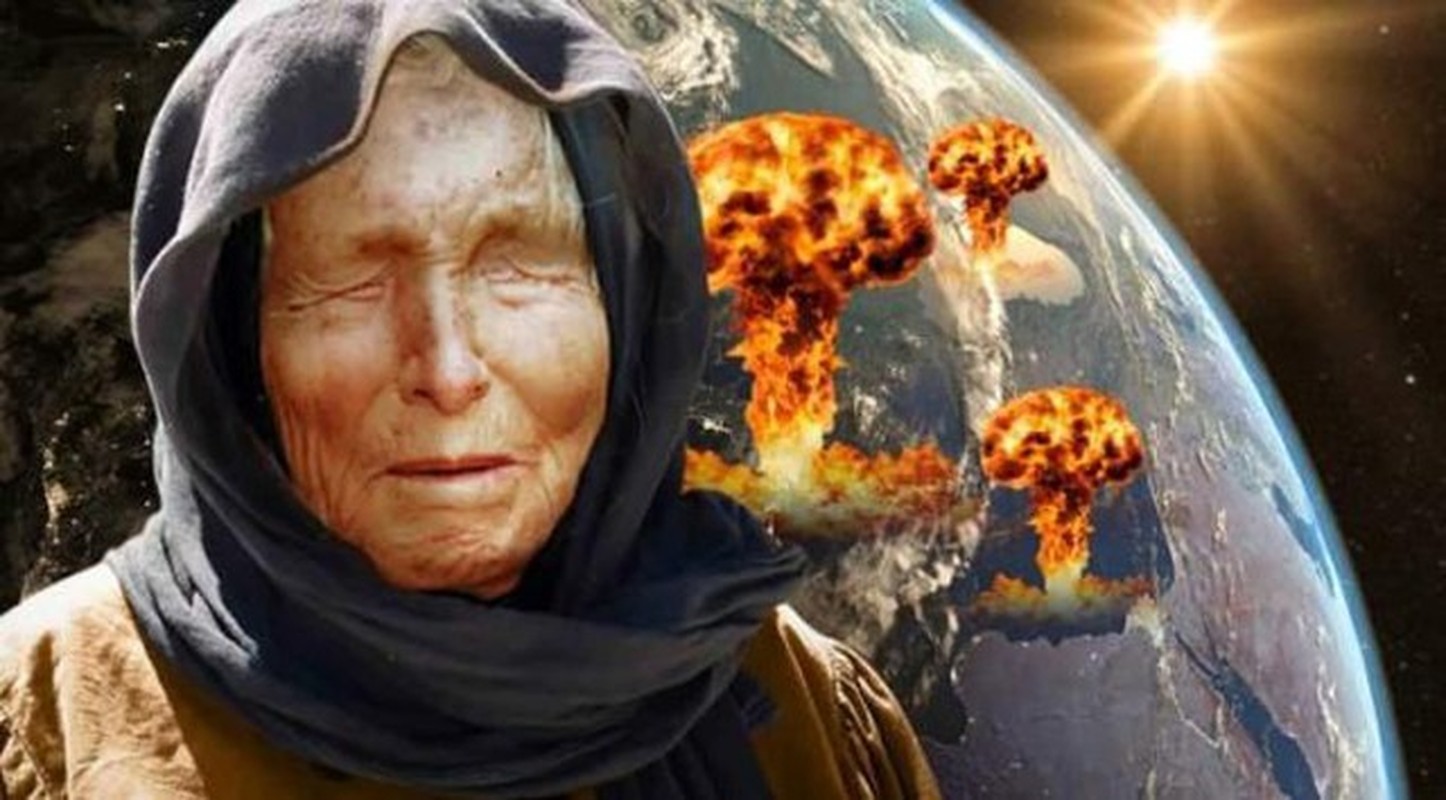13 Worst Natural Disasters in the US of All Time
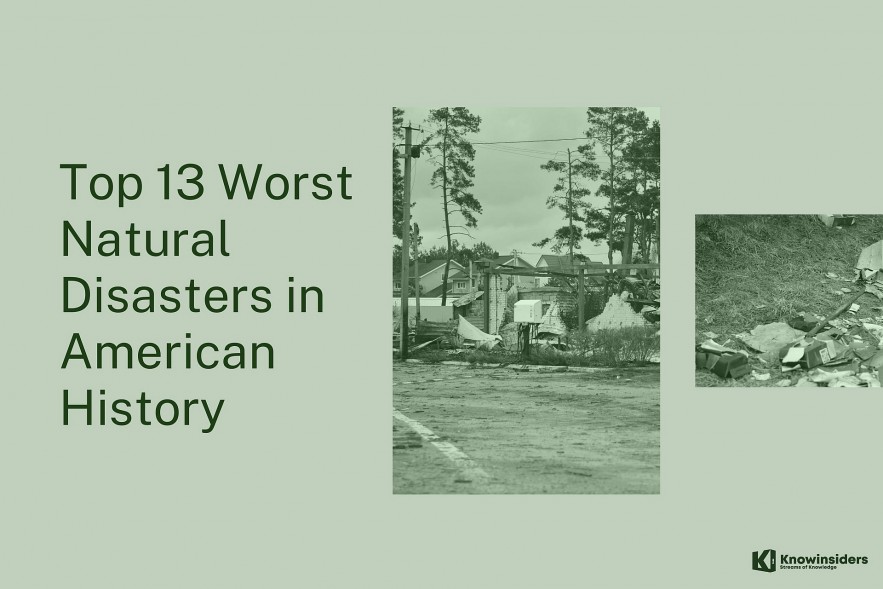 |
| Top 13 Worst Natural Disasters in American History. Photo: KnowInsiders.com |
| Contents |
Mother Nature can be merciless. From the churning hurricanes of the Gulf Coast, to the trailer-tossing storms of Tornado Alley, to the ground-pounding quakes of California, the United States is no stranger to deadly natural disasters. Check out top 13 Worst Natural Disasters in American History
1. The Peshtigo Fire in 1871
 |
| Photo door county pulse |
Northeast Wisconsin was devastated by the most destructive forest fire in American history on October 8, 1871. The Great Chicago Fire has historically somewhat overshadowed the Peshtigo Fire, despite the fact that the Peshtigo Fire covered a much larger area and resulted in a much higher number of fatalities. Between 1,200 and 2,500 people perished in the Peshtigo Fire, which burned 1,875 square miles and destroyed twelve communities. The fire is believed to have been started by small land clearing fires that got out of hand and started a firestorm.
| Often called "The Great Fire of 1871" or "The Peshtigo Fire," the singular "fire" actually refers to at least three different forest fires that all started on the same day in the same region. The Great Chicago Fire and Great Michigan Fire, which also happened on this day, are unrelated to the Peshtigo Fire(s), but they were all caused by the same weather conditions. |
2. The Johnstown Flood in 1889
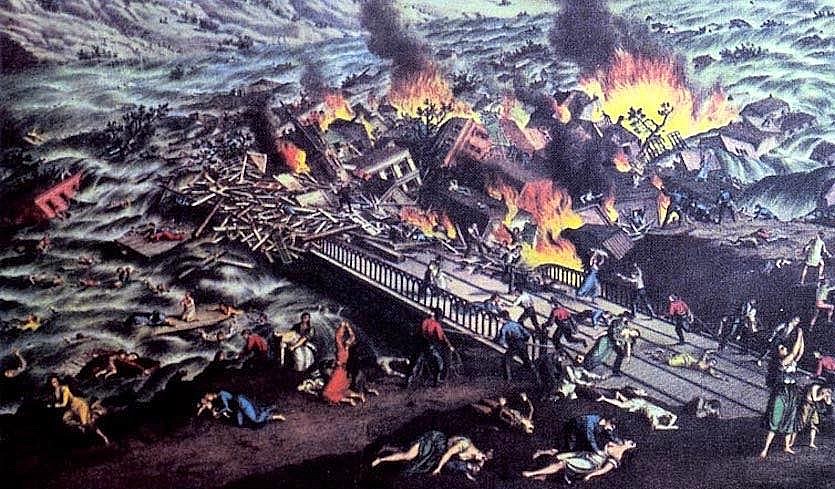 |
| Photo weather underground |
It is challenging to imagine the scope of the Johnstown flood of 1889. Summarizing the effects of the flood in figures and facts is a quick way to communicate their scope.
The following is a list of some of the flood in Johnstown's most illustrative facts:
2,209 people died.
99 entire families died, including 396 children
124 women and 198 men were left widowed.
More than 750 victims were never identified and rest in the Plot of the Unknown in Grandview Cemetery
Bodies were found as far away as Cincinnati, and as late as 1911
1,600 homes were destroyed
$17 million in property damage was done
Four square miles of downtown Johnstown were completely destroyed
The pile of debris at the stone bridge covered 30 acres
The distance between the dam that failed and Johnstown was 14 miles.
3. Chenière Caminada hurricane (1893)
The Chenière Caminada hurricane, also known as the Great October Storm, devastated much of the Louisianan island of Chenière Caminada, killing an estimated 2,000 people. The powerful storm surge that arrived with the hurricane, rising as high as 16 feet, was blamed for many of the fatalities.
Around 780 people, or about half the island's population, perished in the hurricane, and numerous crops were completely destroyed, further harming farmers. Also sunk were numerous ships and schooners that were at the time in Louisiana and Mississippi.
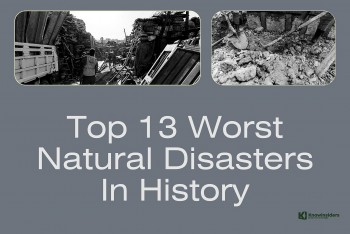 Top 13 Worst Natural Disasters In the World History Top 13 Worst Natural Disasters In the World History What do you think of when we mention 'natural disaster'? Tsunami? Earthquake? Tornado? What natural disaster is the most deadly in the history? Let's explore ... |
4. San Ciricao hurricane (1899)
On the islands of Andros (270 fatalities) and Exuma (64 fatalities), the storm, which had maximum winds of 150 mph, resulted in 334 deaths. loss of vessels and severe boat damage at Rum Cay, Eleuthera, and Inagua. On Long Island, plantations for bananas and plantains were destroyed.
On San Salvador Island, damage to two churches and private residences. In Nassau, walls and fences were destroyed, 44 homes were destroyed, the community of Gambier was completely destroyed, and local agriculture was severely impacted by the destruction of plantations and orchards and the loss of numerous trees and fruits.
Small craft (boat) losses in Nassau are estimated to be $50,000, while house property losses are $5000. The destruction of boats and other modes of transportation left Exuma in ruins. Numerous homes, churches, and other structures were demolished. 97 buildings on the island were demolished and 131 were damaged.
Numerous settlements on the northern Andros island were completely destroyed, resulting in the destruction of numerous homes. Peas, oranges, potatoes, grapefruit, oranges, and other crops were among the many that were lost. many casualties resulted from the beaching of several vessels;
5. The Great Galveston Hurricane in 1900
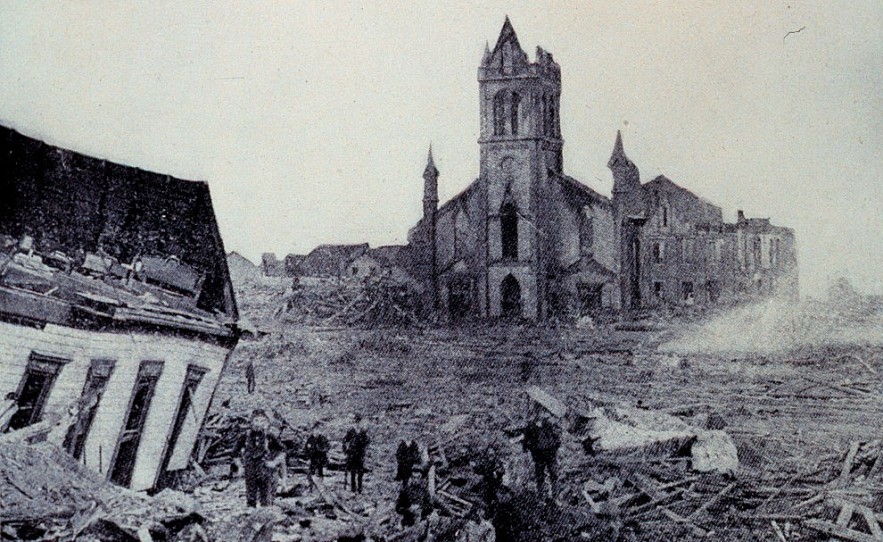 |
| Photo National Service |
The 1900 hurricane that hit the Texas island city of Galveston killed more people than any other natural disaster in American history. On September 8, a category four hurricane hit the area with winds of more than 135 mph, destroying more than 3,600 buildings.
Between 6,000 and 12,000 people perished on the mainland and Galveston Island. The most modern city in Texas was almost wiped out. According to Kerry Emanuel, an atmospheric science professor at the Massachusetts Institute of Technology, when the storm began to develop in early September of 1900, "any modestly educated weather forecaster would've known that" it was passing west.
6. 1906 San Francisco Earthquake and Fire
The largest fire that people have ever seen spread over a large portion of San Francisco in three days starting on April 18, 1906.
The first violent tremor of an earthquake occurred on the morning of April 18, 1906, at 5:12.06 and lasted for 28 seconds. The people were awakened on that fateful morning to the horrifying sight of their city being destroyed. 52 fires had started within a short period of time, many of which even in normal circumstances would have required a general alarm. Before the flames were put out three days later, 478 people had died—among them the fire department's chief, Dennis T. Sullivan—and $350,000,000. The area that burned was 4.7 square miles, and it covered the entire downtown area.
The majority of the firefighters in the downtown area had just gone to bed, exhausted from a two-alarm fire that had broken out earlier in the morning at Bay and Mason Streets. At the initial shock, the entire alarm system failed. 556 of the 600 glass-wet batteries that were powering the system were damaged during the earthquake. Because of this, not a single alarm was ever raised for the biggest of all fires!
Twenty miles separated the city's main reservoirs, six of which were revealed to be on the "fault line" of the earthquake and were destroyed. Other pipe lines were discovered to be broken and located in flooded ground. Even from the massive main sewers, water had to be sucked from the quickly drying cisterns.
7. Okeechobee hurricane (1928)
South Florida had only 50,000 residents as of September 1928. Despite the fact that there were still a ton of subdivisions and new communities being built, the land and real estate boom was already starting to slow down.
A loud warning about the susceptibility of their new homes to tropical cyclones had already been issued to the new residents by the devastating Great Miami Hurricane of September 1926. However, Dade and Broward counties took the brunt of the storm's damage.
However, the Great Miami Hurricane of 1926, which swept flood waters from Lake Okeechobee into Moore Haven, the county seat of Glades County, and killed over 100 people, served as a foreshadowing of things to come.
Why the United States Is Becoming More Vulnerable to Natural Disasters?Population growth and distribution, especially increased population density and urbanization, increases vulnerability to disasters. Nearly 80 percent of the U.S. population resides in urban areas, resulting in increasing population concentration in coastal communities and flood-prone areas. |
8. The worst North American heatwave (1936)
One of the country's hottest summers on record occurred during the "Dust Bowl" in July 1936, particularly in the Plains, Upper Midwest, and Great Lakes regions. Around 5,000 people perished from the heat nationwide. Due to poor farming practices and a protracted drought that affected the area, there was little vegetation to help cool down the high temperatures.
At the height of the heat wave, many locations in Illinois experienced peak temperatures of over 110 degrees, setting all-time high temperature records.
9. U.S. drought/heat wave (Summer 1988)
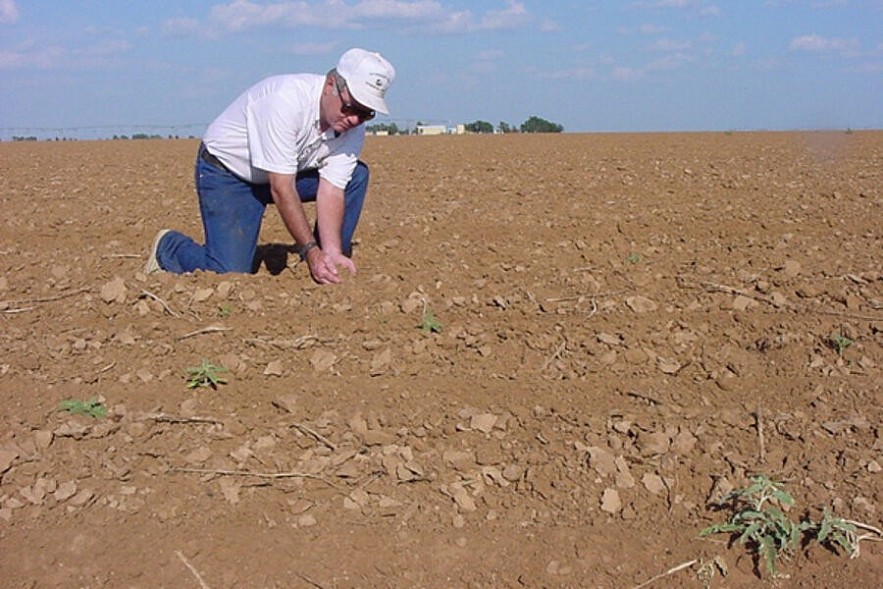 |
| Photo Christian Science Monitor |
Estimated cost: $54.3 billion
A severe drought that affected a large area of the United States from June through August of 1988 had a negative impact on farmers and other agricultural industries. The official death toll, according to NOAA, was 454, but there may have been 5,000 indirect deaths from heat exhaustion.
Except for northern New England, nearly every state in the continental U.S. recorded temperatures above 90 degrees on June 21, 1988, according to a report from UPI at the time. Thousands of people died as a result of the severe heat wave and drought, and the precise number is difficult to calculate now, decades later.
10. Hurricane Katrina (August 2005)
Tropical cyclone Hurricane Katrina made landfall in the southeast of the United States in late August 2005. More than 1,800 people died as a result of the hurricane and its aftermath, making it the most expensive natural disaster in American history.
This powerful hurricane caused unimaginable destruction and a staggering number of fatalities in Louisiana and Mississippi, with significant effects also felt in Alabama and the western Florida panhandle. The New Orleans region received the majority of the media coverage for this storm, which captivated the public and media alike. Katrina was one of the most horrifying natural disasters in American history, given the extent of its effects.
| Tens of thousands of people remained in New Orleans as of August 31 when the first wave of evacuees arrived at the Red Cross shelter at the Houston Astrodome, about 350 miles (560 km) away. By September 1 an estimated 30,000 people had gathered at the convention center and another 25,000 had taken refuge under the Superdome's damaged roof. Daily temperatures reached 90 °F (32 °C), food shortages quickly became a problem, and potable water became scarce. A public health emergency was brought on by the lack of fundamental sanitation and the pervasive floodwaters, which were brimming with bacteria. On September 2, the National Guard mobilized to distribute food and water, and an effective military presence was established in the city. As the hurricane victims were being evacuated, workers started to repair the breached levees. Less than 10,000 people were thought to be living in New Orleans as of September 6 according to local police estimates. Numerous nations contributed money and supplies as the recovery process got under way, and Canada and Mexico sent troops to the Gulf Coast to help with cleanup and construction. On October 11, 2005, or roughly 43 days after Katrina made landfall, the U.S. Army Corps of Engineers pumped the last of the floodwaters out of the city. In the end, the storm caused damage totaling more than $160 billion, and between the fall of 2005 and 2011, New Orleans' population decreased by 29%. Even though many former residents moved back and the city's population rose to about 400,000 by 2020, it was still about 20% lower than it was in 2000. The U.S. Army Corps of Engineers acknowledged problems with the city's levee and flood-protection system ten years after the storm. Levees and sea walls in some areas of the city were not high enough to keep the water back; in other areas, floodgates did not close properly, and some buildings completely collapsed. The Federal Emergency Management Agency (FEMA)'s failure to formally list many flood-prone areas in the New Orleans region as flood zones complicated the situation because homeowners were unaware of their predicament and did not have flood insurance, both of which increased the total amount of damage. Since then, $15 billion in federal funding has been used to upgrade floodwalls, floodgates, and earthen berms, as well as to strengthen New Orleans' flood protection system. When Hurricane Ida, a category 4 storm, made landfall close to the city in August 2021, these defenses held. |
11. Hurricane Ike (September 2008)
$40.2 Billion in Damage
Deaths: 112
Hurricane Ike was only a Category 2 hurricane when it struck land in September 2008, but its size was exceptional.
As the eye crossed Texas, tropical-force winds spanned a total of 425 miles from the northwest to the southeast, bringing a deadly and destructive storm surge across the Texas and southwest Louisiana coasts.
The storm caused severe gasoline shortages in the southeast United States due to damaged oil platforms, storage tanks, pipelines, and refineries in that region, which is home to extensive oil and gas drilling as well as related industries. Fuel costs increased dramatically across the nation and into Canada.
12. Hurricane Maria in 2017
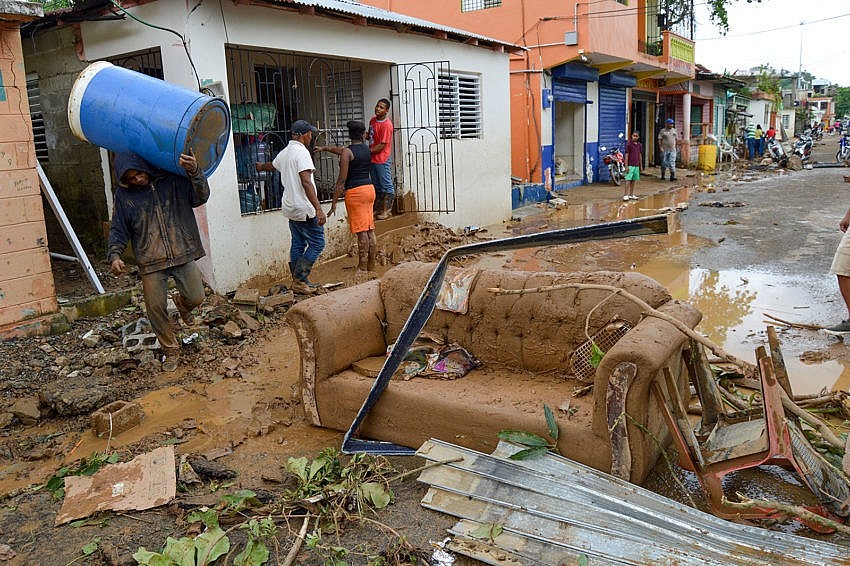 |
| Photo World Vision |
Estimated cost: $103.5 billion
The Caribbean Sea islands were hit by Hurricane Maria, the fourth significant hurricane to do so in 2017. In Puerto Rico in 2017, Hurricane Maria-related causes resulted in 5,000 fatalities.
Hurricane Maria followed the same path as Hurricane Irma before it, making landfall in Dominica and Puerto Rico while also bringing destructive winds and rain to other Caribbean islands already devastated by Hurricanes Harvey and Irma.
Hurricane Maria inflicted the most damage in Puerto Rico. Infrastructure related to transportation, agriculture, communication, and energy completely failed on the island. Unknown is the exact number of deaths brought on by the storm. Harvard researchers placed the death toll anywhere between 800 and 8,500, while NOAA estimated there were close to 3,000.
13. Hurricane Ida (August 2021)
On August 29, Hurricane Ida struck Louisiana, making landfall near Port Fourchon as a Category 4 storm with sustained winds of 150 mph. It was deemed "extremely dangerous" by the National Hurricane Center. At 157 mph, a storm reaches Category 5. Ida then churned inland, bringing deadly storm surge along the coasts of Louisiana, Mississippi, and Alabama, as well as catastrophic winds, torrential rain, tornadoes, and flash and urban flooding.
With total losses of US$65 billion (insured losses of US$36 billion), Hurricane Ida was the most expensive natural disaster of the year.
At least 28 deaths were reported in Louisiana, and at least another 50 deaths were reported in six Eastern states, according to officials there.
| According to federal scientists, 2021 was yet another dreadful and fatal year for weather and climate disasters in the USA. According to the National Oceanic and Atmospheric Administration, there were 20 different disasters that each caused damage that was at least $1 billion. The total cost of disasters in the United States in 2021 exceeded $145 billion, making it the third-highest cost on record. As many as 688 Americans lost their lives in disasters, making it a deadly year. That is more than twice as many disaster-related fatalities as there were last year, when there were 262 in the contiguous United States. |
 Space Hurricane: What is it, Where it happens, Most Devastating Region Space Hurricane: What is it, Where it happens, Most Devastating Region The spiral-armed storm swirled roughly 125 miles over the North Pole, churning in place for almost eight hours, which called "Space Hurricane", has make social ... |
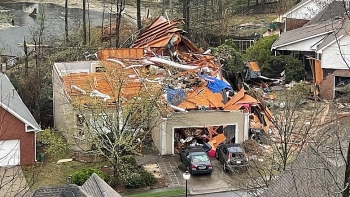 Alabama Storm and Tornado Emergency: Update News, Latest Photos of Damages Alabama Storm and Tornado Emergency: Update News, Latest Photos of Damages An apparent tornado in central Alabama caused damage in heavily populated areas of Shelby County. Latest News, Photos of Damages in Alabama and Tornado Emergency, ... |
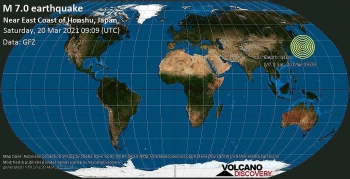 Update: Japan Earthquake shaking Tokyo, Tsunami Warning Update: Japan Earthquake shaking Tokyo, Tsunami Warning Japan Earthquake Latest News - A strong earthquake struck Saturday off northern Japan, shaking buildings even in Tokyo and triggering a tsunami advisory for a ... |


